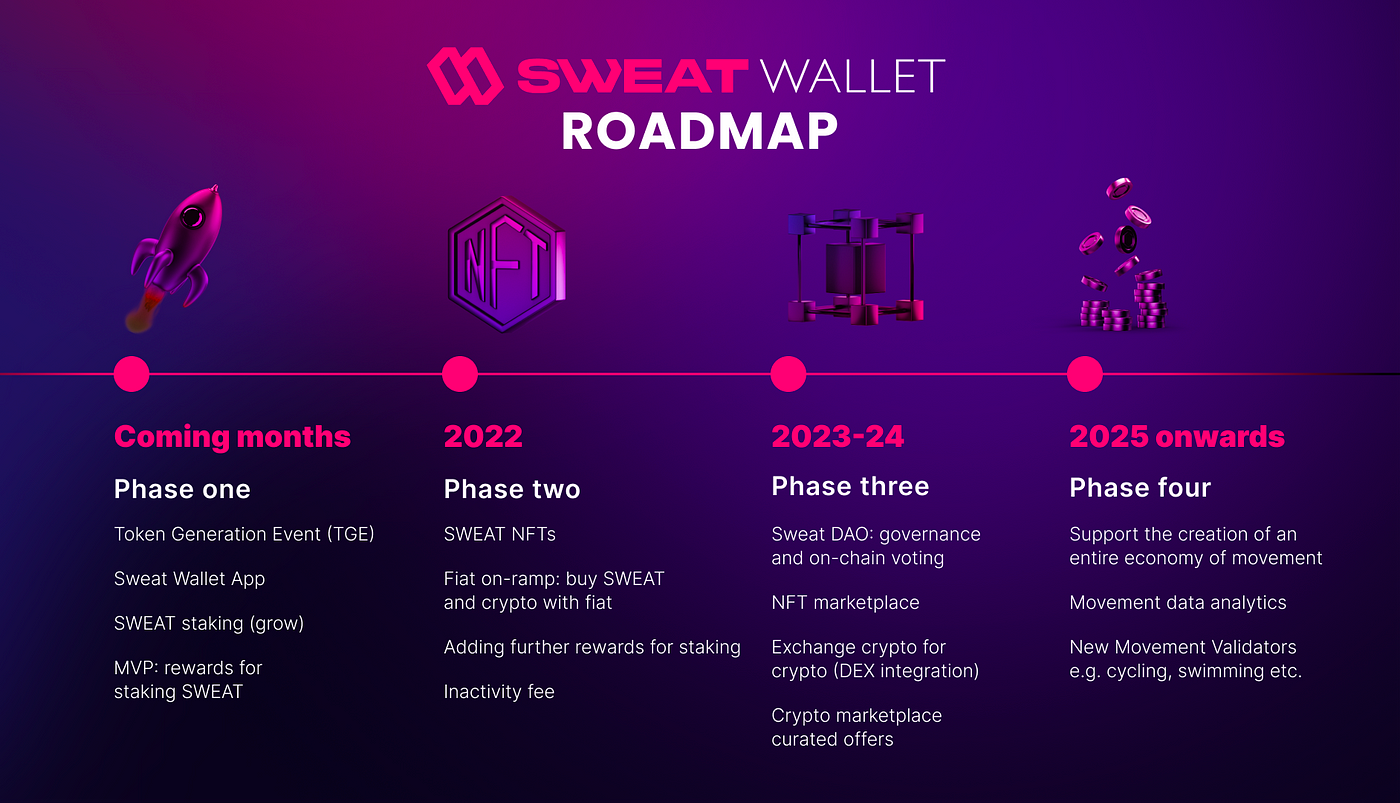The demand for SWEAT comes from fundamental value.
Most engage to earn products lack this value. In these games, users buy NFTs to earn more of the token. Why do they want more of the token? To upgrade their NFT. And so on.
SWEAT is designed differently. There are two main drivers of demand for SWEAT.
- Utility: rewards, use as a platform token, and dynamic NFT gameplay (the principle of the SWEAT game is enjoyment — earning potential is secondary)
- Buy and burn
Buy and burn requires using revenue generated by the Sweat Foundation to buy SWEAT on the secondary market and burn it, or else to distribute it as staking yield (this is why our staking initiative is net deflationary). At the end of this article, we detail the principles of how we generate revenue used to buy and burn.
These two drivers represent short to medium term demand for SWEAT. It is helpful for our community to contextualize these mechanisms according to our long term goals.
The longer term demand for SWEAT is more nuanced. It can be read about in our article on the economic value of movement. Briefly, SWEAT is a tokenization of movement, and can therefore become an expression of the fundamental, inherent economic value of movement. That is our vision.
This is how we get there.
SWEAT utility: rewards
The Sweat Wallet app is the hub of token utility. At the Token Generation Event (September 13th), SWEAT will be live in your Sweat Wallet app.
Users will be able to stake SWEAT in the new app to access rewards. Rewards will be tiered: if you stake higher amounts of SWEAT, you will receive better rewards. Rewards are designed to bring value to your movement. The more you move, the more/better rewards you can receive.
We are dedicated to bringing rewards that people really want. Please reach out in our channels with ideas for rewards — we would love to hear what our community values.
Examples of rewards:
- Vouchers and discounts for blue-chip brands including Adidas, Amazon and Nike
- Tickets to events: sporting events, and concerts
- Stablecoins (USDt and USDC)
SWEAT utility: NFTs & gameplay
We are building a casual, dynamic NFT game in the Sweat Wallet app. This will arrive shortly after TGE.
First of all, we want to make this game fun! Enjoying the game, and benefiting your health, are the main goals. In the game, users engage in peer-to-peer competitions that are influenced by their daily steps, NFT level, and gameplay skill.
As for demand, users stake SWEAT when playing the game. The winner of the head-to-head claims the SWEAT, with the Sweat Foundation taking and burning a fee. As such, the game is net-deflationary.
SWEAT utility: platform token
Staking SWEAT will unlock features in the wallet. For example, higher stakers of SWEAT could access premium features, priority access to NFT drops, and increased daily minting limits.
This utility will become increasingly valuable as features of the Sweat Wallet app increase. For example, shortly after TGE we will integrate a fiat on-ramp feature, allowing users to purchase SWEAT (and other crypto) with a bank card. Higher stakers could have a lower transaction fee.
The features of the app can be found in our roadmap.

Buy and burn
The Sweat Foundation will allocate a portion of revenue to buy and burn SWEAT on the secondary market, or to buy SWEAT and distribute it as staking yield.
We will release the details of the buy and burn soon.
Revenue
Many engage to earn products rely on a circuitous or reflexive value proposition. Revenue is driven by demand for NFTs; NFTs are desirable because they enhance the user’s ability to earn the token; the token is valuable to upgrade and maintain NFTs.
Our revenue models are not reliant on NFTs or pay to play. User engagement (B2B) and transaction fees (B2C) are our two main revenue drivers. Both revenue streams are complementary to SWEAT, rather than reflexive. The reason for this is demonstrated by the Sweat Economy value flywheel. An increase in value for SWEAT increases engagement, increases value to brands, which increases our ability to provide rewards.


